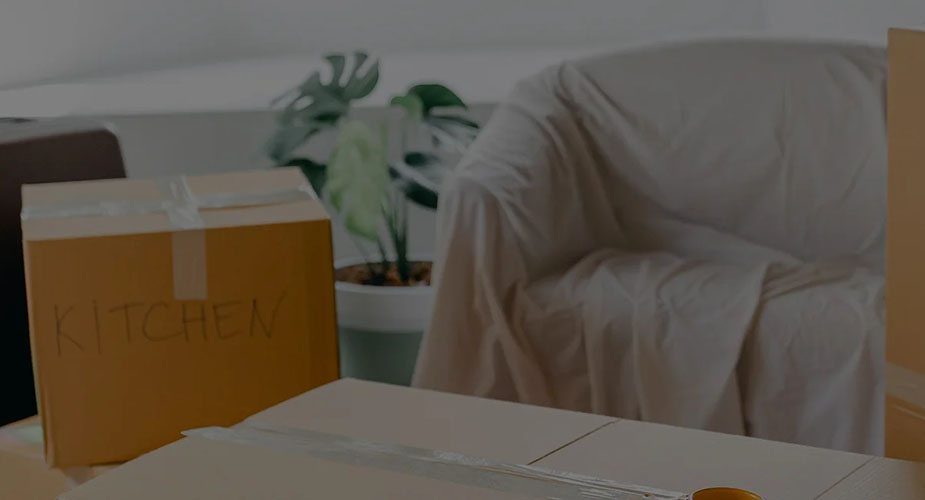Moving to a new home can be an exciting adventure, but it can also be a daunting task, especially when you need to prepare for a furniture relocation. Whether you are moving to a different city or country, the process of moving furniture requires adequate preparation to avoid damage, loss, or delays during the move. Proper planning for a furniture relocation is crucial to a successful and stress-free furniture relocation. In this blog, we will discuss how to prepare for furniture relocation and the steps involved in the process. We will also provide useful tips to ensure your furniture relocation is a success.
- May 15, 2023
Furniture relocation is the process of moving furniture and other household items from one location to another. It could be within the same city, state or country, or it could be an international move. Furniture relocation could be stressful and overwhelming without adequate preparation, and it is essential to take the necessary steps to make the process as smooth as possible.
Proper preparation is the key to a successful furniture relocation. Without adequate preparation, there could be delays, damage to your furniture, or loss of items during the move. Preparing for furniture relocation involves budgeting, planning, packing, disassembling, and moving large furniture items. Adequate preparation will ensure that your furniture is well-protected, making the move hassle-free and stress-free.
Earthrelo is a reputable international moving company with expertise in furniture relocation. They offer reliable and efficient moving services, including packing, shipping, and storage of household goods, automobiles, and commercial goods. With their experience and expertise in international moving, Earthrelo can handle your furniture relocation needs, whether local or international.
Prepare for a Furniture Relocation – EarthRelo helps
Budgeting for Furniture Relocation
Budgeting is an essential aspect of furniture relocation. It helps you determine how much you can spend on the move and helps you prioritize your expenses. Your budget should include the cost of hiring a moving company, packing materials, disassembly tools, transportation costs, and any other expenses related to the move. You should also consider the cost of insurance to protect your furniture during the move.
Timeline for Furniture Relocation
Preparing a timeline for furniture relocation is crucial to ensure that everything is done on time. A timeline will help you plan, organize your move, and prevent any last-minute stress. You should start planning for your move at least eight weeks before the move date. This will give you ample time to sort out your belongings, dispose of unwanted items, and pack your furniture.
Selecting a Reputable Moving Company
Choosing a reputable moving company is essential to a successful furniture relocation. A reputable moving company will ensure that your furniture is well-protected, and the move is hassle-free. When selecting a moving company, consider their experience, reputation, and customer reviews. It is also essential to check if they are licensed and insured.
Obtaining Necessary Permits and Licenses
Depending on your location and the destination, you may need to obtain permits and licenses for your furniture relocation. It is essential to check with the relevant authorities to ensure that you have all the necessary permits and licenses for a smooth move.
Preparing for Furniture Relocation
Sorting and Decluttering Possessions
Sorting and decluttering your possessions is an essential step in preparing for furniture relocation. It helps you reduce the number of items you need to move, making the process less stressful and less costly. Go through your belongings and decide what to keep, what to donate, and what to dispose of.
Packing Furniture and Other Belongings
Once you have sorted and decluttered your possessions, it is time to pack them for the move. Proper packing is crucial to ensure that your belongings arrive safely and undamaged at your new home.
Materials Needed for Packing
To pack your belongings, you will need packing materials such as boxes, tape, packing paper, bubble wrap, and moving blankets. You can purchase these materials from a moving company or a hardware store. If you are on a tight budget, consider asking friends or family members if they have any boxes or packing materials, they can lend you.
Techniques for Packing Fragile Items
Fragile items such as glassware, porcelain, and electronics require special attention when packing. Use bubble wrap and packing paper to wrap each item individually, and place them in boxes lined with packing material. Fill any empty spaces in the boxes with packing peanuts or crumpled paper to prevent the items from shifting during transport.
For larger fragile items such as mirrors or artwork, consider hiring a professional packing and crating service to ensure they are packed securely.
Labelling and Categorizing Boxes
Labelling and categorizing boxes is essential for a smooth move. Use a permanent marker to label each box with its contents and the room it belongs in. This will make unpacking easier and help the movers place the boxes in the correct rooms.
Disassembling Furniture
Disassembling your furniture is an important step to make the moving process more manageable. It will also help prevent damage to your furniture during transport.
Necessary Tools for Disassembling
To disassemble your furniture, you will need the right tools. These may include a screwdriver, pliers, a hammer, and an Allen wrench. Make sure you have the necessary tools before starting to disassemble your furniture.
Precautions to Take When Disassembling
When disassembling your furniture, take precautions to avoid damaging the furniture or injuring yourself. Keep all screws and small parts in a plastic bag and label them to make reassembly easier. Use masking tape or painter’s tape to mark any pieces that may scratch or damage other parts during transport.
Moving Large Furniture Items
Moving large furniture items such as sofas, beds, and bookcases can be challenging. Consider hiring professional movers to move these items for you.
Hiring Professional Movers for Large Items
Professional movers have the experience and equipment to move large furniture items safely and efficiently. They can disassemble and reassemble the furniture for you and use specialized equipment such as dollies and furniture sliders to move the items without damaging them or your home.
Precautions to Take When Moving Large Items
If you decide to move large furniture items yourself, take precautions to avoid injury or damage. Use proper lifting techniques, and make sure you have enough people to help you move the items. Protect your floors and walls by using furniture sliders or blankets to move the items.
During the Furniture Relocation
Supervising the Moving Process
During the furniture relocation process, it is important to supervise the moving process. Make sure the movers are handling your belongings with care and that they are following the timeline you agreed upon.
Communicating with the Moving Company
Communication with the moving company is crucial during the relocation process. Make sure to provide them with your contact information and be available to answer any questions they may have. If you have any concerns, address them with the moving company as soon as possible.
Handling Unexpected Challenges During the Move
Despite careful planning and preparation, unexpected challenges can arise during the move. These may include traffic delays, inclement weather, or equipment malfunctions. Stay calm and flexible and work with the moving company to find solutions to any problems.
Maintaining Inventory During the Move
It is essential to maintain an inventory of your belongings during the furniture relocation process. This can be done by labelling and categorizing boxes and keeping a list of items being moved. It will help you keep track of your possessions and ensure that everything arrives at the destination.
In addition to keeping track of your belongings, it is also a good idea to take photographs of valuable items before they are packed. This can serve as evidence in case of damage or loss during the move.
After the Furniture Relocation
Unpacking and Reassembling Furniture
After your belongings have arrived at the new destination, it is time to unpack and reassemble your furniture. Start by unpacking essential items first, such as bedding, kitchenware, and bathroom supplies. Then, move on to larger items like furniture.
When unpacking furniture, follow the labels and categorization system used during packing. Reassemble any disassembled furniture carefully, following the manufacturer’s instructions. If you are unsure about how to reassemble a particular piece of furniture, consult a professional or refer to the manufacturer’s website.
Checking for Damages and Filing Claims
Check all items for damage immediately after unpacking. If you notice any damage, document it by taking photographs and file a claim with the moving company as soon as possible. Most moving companies have a claims process that you will need to follow, including providing documentation and submitting the claim within a certain timeframe.
Cleaning and Organizing the New Space
Once all items have been unpacked and assembled, it is time to clean and organize the new space. Start by cleaning surfaces and floors, and then arrange furniture and belongings in a way that makes sense for you. This is an opportunity to declutter further and create a fresh start in your new home.
Settling into the New Home
Finally, take some time to settle into your new home. Get to know your surroundings and explore the neighborhood. Meet your new neighbors and establish new routines. Creating a sense of familiarity and comfort in your new space can help you adjust to the new environment and start to feel at home.
Conclusion
In conclusion, furniture relocation can be a stressful and challenging experience, but with proper planning and preparation, it can be a smooth and successful transition. It is important to budget for the relocation, select a reputable moving company, sort and declutter your possessions, and pack and disassemble furniture carefully. During the move, communicate with the moving company, supervise the process, handle unexpected challenges, and maintain an inventory of your belongings. After the move, unpack and reassemble furniture, check for damages and file claims, clean and organize the new space, and settle into your new home.
At Earthrelo, we understand the complexities of international moving and are committed to providing our clients with the highest level of service. Our expertise in international moving and attention to detail can help make your furniture relocation experience a success.
Also Read: How to Move a Mobile Home for Free





